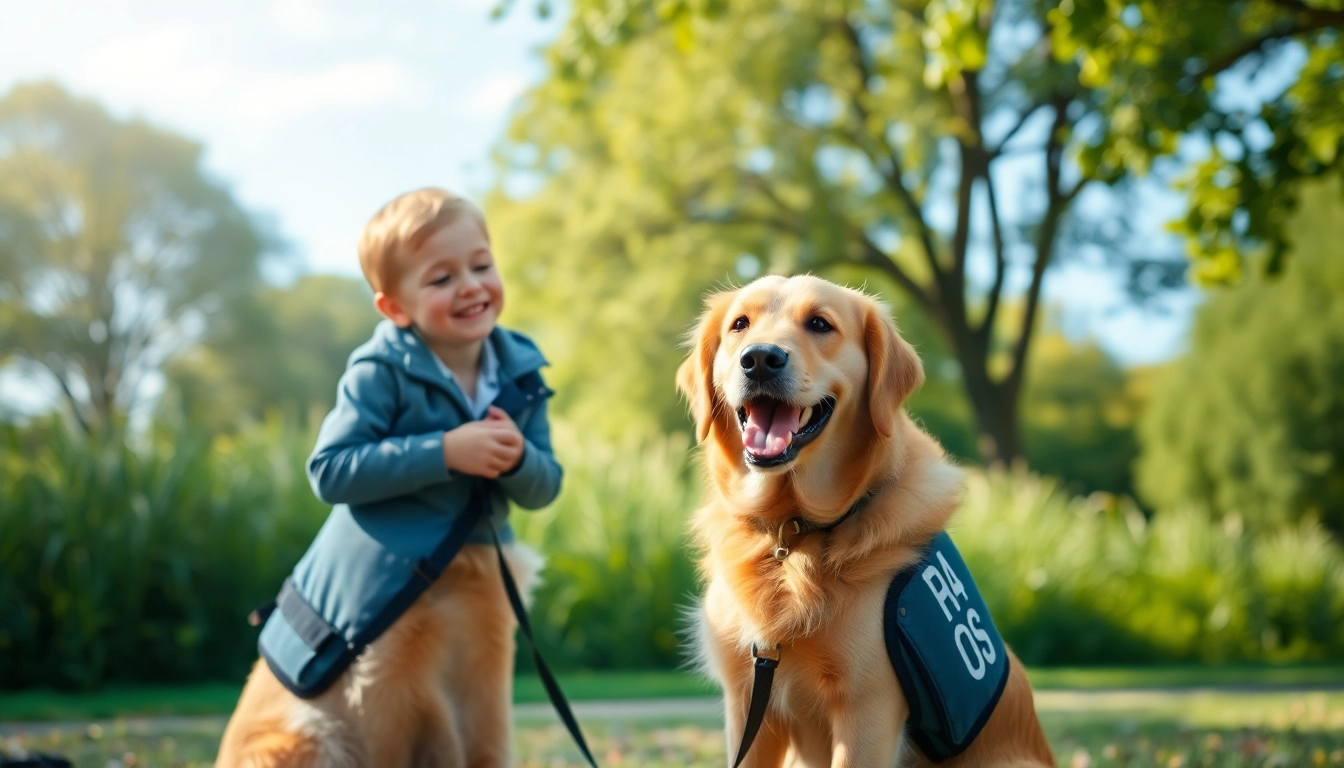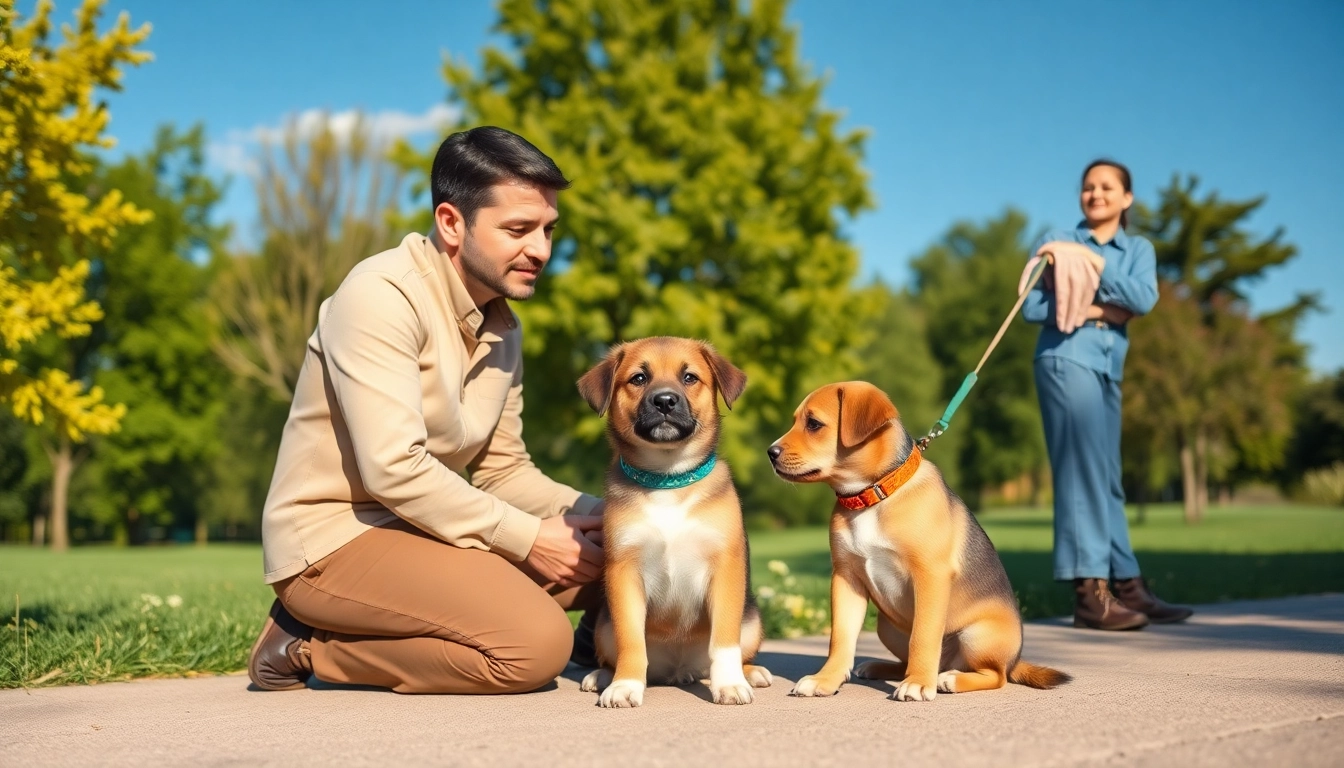What are Autism Service Dogs?
Autism service dogs are specially trained to assist individuals with autism spectrum disorder (ASD) in various aspects of life. These dogs are not only loyal companions but serve crucial roles in the everyday life of their handlers, providing emotional support, safety, and companionship. They are trained to understand the unique challenges faced by their human partners, enabling them to improve their quality of life significantly. Many families are turning to autism service dogs as a way to cope with the complexities of autism.
Definition and Purpose
An autism service dog, also known as an assistance dog, is specifically trained to help individuals with autism in various ways. Their primary purpose is to assist their handlers with tasks that facilitate daily living and improve interactions with the environment. These roles often include diffusing anxiety during stressful situations, providing companionship in social interactions, and ensuring safety in public settings.
The presence of an autism service dog can create a calming environment, helping their human partner feel less isolated and more connected. By serving as both a physical and emotional support, these dogs empower individuals with autism to engage more fully in life, potentially leading to greater independence.
Types of Autism Service Dogs
Autism service dogs come in various types, each tailored to meet specific needs:
- Companion Dogs: These dogs provide emotional support and companionship. They help reduce feelings of isolation and anxiety.
- Mobility Assistance Dogs: Trained to assist with mobility issues, these dogs can help their handlers navigate public spaces, providing stability and stopping them from wandering away.
- Medical Alert Dogs: These dogs are trained to alert their handlers to medical conditions like seizures, helping to ensure timely responses during emergencies.
- Social Interaction Dogs: These dogs encourage social interaction and can improve social skills by engaging others in conversation and play.
How Autism Service Dogs are Trained
The training process for autism service dogs is extensive and specialized. It typically includes socialization, basic obedience, and service-specific tasks that cater to the unique needs of individuals with autism. Here’s how the training generally unfolds:
- Socialization: Early socialization is crucial. Dogs are exposed to various environments, people, and other animals to ensure they are comfortable and confident in public settings.
- Obedience Training: Basic commands such as sit, stay, and come are reinforced. This foundation helps ensure that the dog can follow directions reliably.
- Task-Specific Training: Depending on the needs of the individual, dogs may be trained to perform specific tasks, like creating space in crowded areas or alerting to sensory overload.
Additionally, continuous training and reinforcement are necessary to maintain the dog’s skills throughout their working life.
Benefits of Autism Service Dogs
Emotional Support and Companionship
One of the most significant benefits of having an autism service dog is the emotional support they provide. For many individuals with autism, feelings of anxiety and loneliness are common. A service dog acts as a constant companion, offering unconditional love and support. Whether during stressful situations or moments of social engagement, having a trusted canine partner can help navigate these challenges, making them feel less daunting.
Improving Social Interactions
Autism service dogs can aid significantly in social interactions. Many individuals on the autism spectrum struggle with social cues and engagement. A service dog can serve as a conversation starter or facilitate social interactions, allowing their handler to connect with others more naturally. Dogs naturally draw attention, which can ease the pressure off of individuals in social settings, enabling them to engage without feeling overwhelmed.
Safety and Mobility Assistance
Safety is another crucial benefit of autism service dogs. They can help prevent individuals from wandering away in public places, which is a significant concern for many families. Additionally, these dogs can be trained to assist with mobility, providing physical support as their handlers navigate through different environments. This added layer of safety contributes to increased confidence for both the individual and their family, knowing that they have a loyal companion ready to assist.
Choosing the Right Autism Service Dog
Assessing Family Needs
When considering an autism service dog, it’s essential to assess your family’s specific needs. Different families may have varying requirements depending on the severity of autism, the age of the individual, and the family’s lifestyle. Evaluating all these factors will help in selecting a dog that fits well without imposing additional stress. Factors to consider include the individual’s day-to-day challenges and how a dog might assist in overcoming those obstacles.
Finding Reputable Training Programs
Finding a reputable training program is critical when it comes to acquiring an autism service dog. Not all dogs are suitable for service work, and not all programs provide the same quality of training. Look for organizations that are accredited and have a proven track record in training autism service dogs. Additionally, some programs may allow you to participate in the training process, which can foster a stronger bond between the dog and handler.
Understanding Legal Considerations
Familiarizing yourself with the legal rights concerning service dogs is vital. The Americans with Disabilities Act (ADA) provides specific guidelines on public access for service animals. Understanding these rights can help navigate public spaces confidently, ensuring that the handler’s liberties are respected.
Success Stories with Autism Service Dogs
Impact on Families and Children
The transformation that autism service dogs bring to families is often profound. Many families report improved social interactions, decreased anxiety levels, and enhanced emotional regulation due to the presence of a service dog. These dogs become an integral part of the family unit, contributing to stronger and healthier relationships among family members.
Case Studies of Transformation
Numerous case studies illustrate the impact of autism service dogs. One notable instance involved a young boy who was selectively mute and struggled with anxiety. After receiving an autism service dog, he began to speak more frequently and comfortably when accompanied by his canine partner. This transformation highlights the potential for service dogs to facilitate communication and emotional expression in children with autism.
Community Feedback and Experiences
Community feedback reinforces the widespread benefits of autism service dogs. Many individuals share positive experiences on various platforms, highlighting improvements in social engagement and support during daily challenges. Such testimonials serve to inspire other families considering service dogs, illustrating their life-changing potential.
Resources for Families Seeking Autism Service Dogs
Organizations and Support Groups
Several organizations exist to help families navigate the process of acquiring an autism service dog. These organizations often provide resources, support groups, and valuable information about training options. Connecting with these groups can offer emotional support and informational guidance for families just beginning this journey.
Funding and Grants for Service Dogs
Acquiring an autism service dog can be financially challenging. Families often seek funding or grants to help offset the costs associated with training and acquiring a service dog. Many organizations offer scholarships or competitive grants to those who qualify, making it easier for families to access the support they need. Researching available options and applying early can help families secure the necessary funds.
FAQs About Autism Service Dogs
As awareness of autism service dogs grows, so do the inquiries surrounding their acquisition and training. Common questions include:
- What kind of training do autism service dogs undergo?
- Are autism service dogs covered by insurance?
- What is the typical waiting period for a trained autism service dog?
- Can other family members interact with the service dog?
Providing clear, accurate answers to these questions can help demystify the process for families considering an autism service dog.




